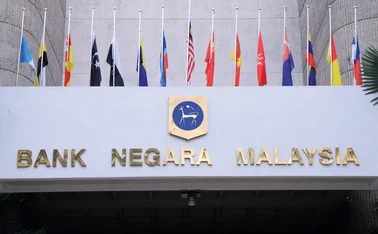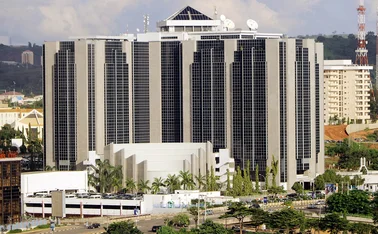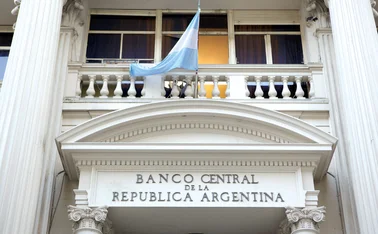

Adopting renminbi in reserve portfolios
Central Banking speaks to four reserve managers about investing in renminbi
The panel
- Alexander Ng’winamila, Director of financial markets, Bank of Tanzania
- Michał Zajac, Head of risk management, National Bank of Slovakia
- Malick Dioume, Director, risk management, Bank of the Republic of Haiti
- Hatem Ibrahim, Chief financial officer, Central Bank of Egypt
On May 14, 2022, the International Monetary Fund (IMF) announced it was increasing the weighting of the US dollar and renminbi in its special drawing rights (SDR), the international reserve assets designed to supplement central banks’ reserves. The dollar increased to 43.38% and the renminbi to 12.28%. The renminbi’s prominence in reserves has increased to 2.7% since 2016, when it was included in the SDR basket and made up 0.8% at the time. The dollar comprised 55% of official foreign exchange reserves, as of the second quarter of 2022, according to anonymised IMF data from 149 reporters. Here, reserve managers discuss with Central Banking the benefits and challenges of investing in renminbi, how they think China’s economy will develop in the short to long term, and offer details about their own allocations.
How are inflation and interest rate hikes affecting your reserve management strategy?

Alexander Ng’winamila, Bank of Tanzania: In response to rising inflation and the resulting rate hikes by some key central banks, it has been necessary to shorten durations for most of our portfolios. Also, although the People’s Bank of China continues to hold a policy-easing stance, rising yields elsewhere have exerted upward pressure on renminbi bond yields, limiting the extent to which we could position the portfolio to benefit from People’s Bank of China policy-easing measures.
In response to interest rate hikes, it has been necessary to shorten durations for most portfolios to limit the impact of rising yields on portfolio performance.
Michał Zajac, National Bank of Slovakia: As central banks are traditional fixed-income investors, the inflation prospects and possible interest rate changes represent an important factor they need to include in their allocation models. However, as our bank is running an asset-liability investment strategy, the impact of expected rate changes needs to be evaluated from a more holistic perspective.
Malick Dioume, Bank of the Republic of Haiti (BRH): Reserve management at the BRH is almost exclusively confined to the US dollar-denominated fixed-income universe, with exposure to treasuries, agencies, sovereign, supranational and agencies (SSAs), and corporates. Our strategy could be best described as ‘wait and see’. Unfavourable market conditions – especially since the beginning of 2022 – coupled with the portfolio’s maturity profile have caused the bank to suffer important unrealised losses. The higher level of interest rates and spreads compared with less than a year ago has also precluded BRH reserve managers from rebalancing (thus materialising losses) to try and profit from more attractive reinvestment options.
Hatem Ibrahim, Central Bank of Egypt: Foreign reserve portfolios consist of a basket of different foreign currencies in addition to gold. Inflation has a direct impact on FX rates. With inflation rising dramatically in the US, the US Federal Reserve is accordingly aggressively raising interest rates to face the negative inflationary effects. This led to the rise of the dollar against all other currencies, and fluctuations in gold prices worldwide – as gold prices are currently unstable because of the high return on the dollar.
What are the pros and cons of investing in renminbi assets?

Michał Zajac: The principal goal when initial steps were taken toward the renminbi market was to learn how to transact in renminbi spot transactions to manage the FX risk that arises when involved in SDR operations. As IMF operations are denominated in SDR, renminbi inclusion into the SDR basket was a logical trigger to incorporate renminbi conversions into our instrument list. Other instruments followed.
The level of market regulation was and still is higher compared to standards of other developed markets. Trading opportunities are limited location-wise as well as time-wise, which represents an obstacle in the process of active portfolio management – especially for investors in other time zones.
The dual currency market (onshore and offshore renminbi) is unique and entails additional challenges for investors. For investors interested in derivative instruments, local legal schemes coupled with the language barrier represent another obstruction.
On the other hand, there are distinct pros to renminbi exposure – diversification and different yield environments. The yields prevailing in the world’s second-largest world bond market differ significantly from the yields in other major markets and offer an opportunity to return seekers. As the People’s Bank of China has been facing unique challenges – partly dissimilar to the rest of the developed world – appropriate exposure to onshore renminbi and the local yield curve was and still is considered beneficial from a risk/return standpoint.
Malick Dioume: In terms of pros, these are primarily the benefits of diversification. A lack of correlation with the global market could reduce overall portfolio volatility. Another positive aspect is the higher-yielding securities offered on the renminbi bond market. Given the very tight range within which the renminbi is evolving, currency risk does not seem to be a major issue and would not detract too greatly from performance. the China Aggregate Index (I08271CN) year-to-date performance is 2.32%, compared with global indexes that have double-digit negative returns.
The cons of investing in renminbi assets could be summarised as the lack of information and/or opacity within the Chinese markets. Recent events (talks of a major real estate bubble and bank runs in small provinces) make us question ourselves about the potential of a systemic disruption in the Chinese economy and how that would affect its bond market. Also, creditworthiness of renminbi bonds is based on China’s onshore credit rating system, which might differ from international rating conventions.
Alexander Ng’winamila: I would summarise the main pros as, first, the diversification benefits away from US and other developed market bonds, historically higher yields, and then low currency and bond price volatility.
The main cons I see as being limited liquidity, the limited number of active brokers and the limited choice of adequate benchmarks.
Hatem Ibrahim: The pros of investing in renminbi assets, as the Chinese economy is expected to become the largest in the world in the long term – which will give strength and stability investing in renminbi assets – include the renminbi becoming a reserve for some emerging market economies and developing countries.
These countries include Belarus, Cambodia, Malaysia, Nigeria, the Philippines, the Republic of Korea and Russia. Although the scale is very small – often below 5% of the total holding in these countries – it is somewhat symbolic that the renminbi has, to some degree, emerged as a reserve currency. One con is that, in the short and medium terms, it is preferable not to invest in renminbi assets, as it is expected to decline amid the rise and strength of the US dollar.
What renminbi-denominated assets are included in your central bank’s investment portfolio?
Michał Zajac: Our bank is investing in Chinese government bonds only, while carefully looking for other opportunities suitable for our risk profile.
Alexander Ng’winamila: SSA bonds and money market/term deposits.
Hatem Ibrahim: Deposits and investments.
Has your central bank’s portfolio position on renminbi investments changed over the past year?
Alexander Ng’winamila: Over the past year our portfolio position on renminbi investments has been slightly increased.
Michał Zajac: Our position has not changed in volume. The only recent change was that the entire portfolio is currently managed by the internal investment team (it was previously partially managed externally).
Hatem Ibrahim: Our portfolio position is almost the same.
With so much uncertainty in the global financial market, what is your opinion on the development of China’s economy in the short, medium and long terms?

Alexander Ng’winamila: We expect China’s economy to remain weak in the short run, as long as the Chinese government maintains its ‘zero-Covid’ policy. However, in the medium term, the economy is expected to fully recover and maintain this strength in the long term.
Michał Zajac: The Chinese bond market is facing significant headwinds due (but not limited) to recent development in the construction sector and real estate market. In the medium term, however, the momentum of the Chinese economy and rising geopolitical power should help to stabilise the situation.
Malick Dioume: In the short and medium terms, we expect some disruptions caused by the central government’s zero-Covid policy. That would translate into lockdowns affecting economic activity to a certain extent. We also believe the real estate market could cause some systemic problems, but it is hard to know the extent of this. Central government’s involvement in economic issues in China has advantages and disadvantages, but should keep the country on a fairly prosperous path over the long term, given its strong track record over the past two decades.
Hatem Ibrahim: Generally, China’s economy is anticipated to moderate in 2022. After a solid beginning in early 2022, Covid-19 disturbed the normalisation of China’s development. GDP growth is expected to moderate strongly to 4.3% in 2022. The slower growth generally reflects the financial harm caused by Omicron flare-ups and the delayed lockdowns in parts of China from March to May. The development driver is expected to bounce back within the second half of 2022.
In the short term, China faces the dual challenge of balancing Covid-19 mitigation with supporting economic growth. The government has stepped up macroeconomic policy easing with high public spending, tax rebates, policy rate cuts and a more dovish stance on the property sector, while China has the macroeconomic space to counter the growth slowdown.
Over the medium term, China’s economy is confronting basic headwinds given unfavourable socioeconomics and high borrowing. To confront these challenges, macroeconomic policies must use caution so as not to worsen monetary dangers. Auxiliary changes are required to reinvigorate the move to more adjusted high-quality development.
Over the long term, China will move away from its previous economic downturn, which began in 2021, and this is what has happened. Over the period covered by China’s 14th Five Year Plan, it has built a moderately prosperous society and achieved its first goal of “entering a new stage of GDP growth rate”.
Read the Bank of China (Hong Kong)'s commentary on this case study
This is a summary of a forum convened by Central Banking. The commentary and responses to this forum are personal and do not necessarily reflect the views and opinions of the panellists’ respective organisations.
Only users who have a paid subscription or are part of a corporate subscription are able to print or copy content.
To access these options, along with all other subscription benefits, please contact info@centralbanking.com or view our subscription options here: http://subscriptions.centralbanking.com/subscribe
You are currently unable to print this content. Please contact info@centralbanking.com to find out more.
You are currently unable to copy this content. Please contact info@centralbanking.com to find out more.
Copyright Infopro Digital Limited. All rights reserved.
You may share this content using our article tools. Printing this content is for the sole use of the Authorised User (named subscriber), as outlined in our terms and conditions - https://www.infopro-insight.com/terms-conditions/insight-subscriptions/
If you would like to purchase additional rights please email info@centralbanking.com
Copyright Infopro Digital Limited. All rights reserved.
You may share this content using our article tools. Copying this content is for the sole use of the Authorised User (named subscriber), as outlined in our terms and conditions - https://www.infopro-insight.com/terms-conditions/insight-subscriptions/
If you would like to purchase additional rights please email info@centralbanking.com
Most read
- ECB says iPhone is currently incompatible with digital euro
- Supervisors grapple with the smaller bank dilemma
- ‘Do I die, or do I survive?’ Officials reflect on Basel III complexity







